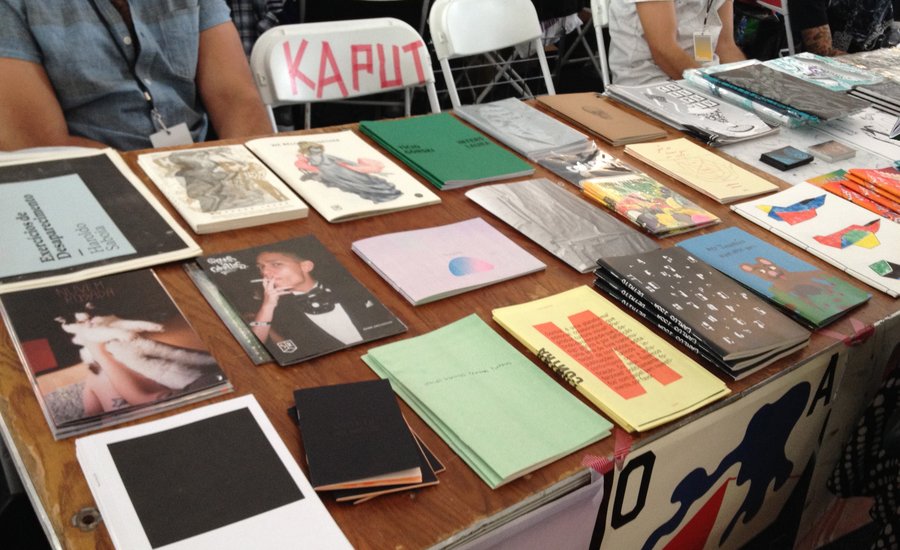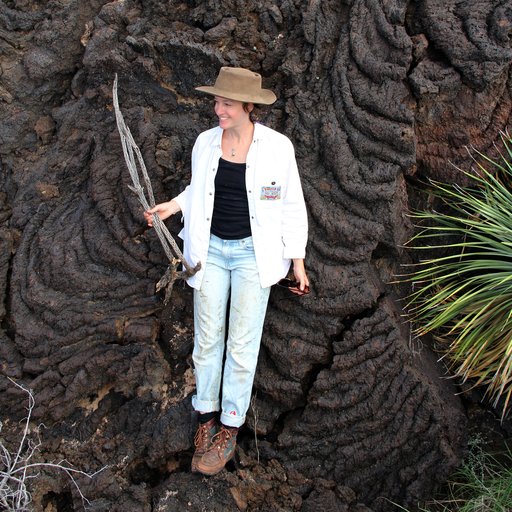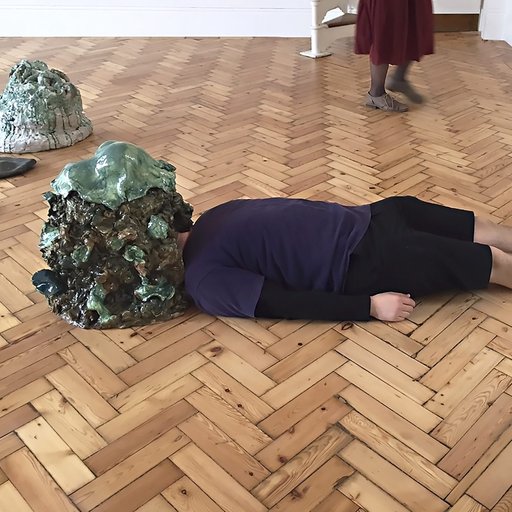In the introduction to Artists Who Make Books , a brand-new release by Phaidon , co-editor Claire Lehmann writes, “At a time when an artist can utilize a wide miscellany of ways and means—a paintbrush, a custom software program, a camera, a CNC router, a found object—it seems worth asking: What does the artist’s book allow, in structure, expression, or reach?” Though artists have been making books for ages, it seems that with the ubiquity of digital media in 2017, artists have a range of democratic means of not only expressing themselves, but disseminating their work to a broad and diverse audience, diminishing the need for artists books and zines. And yet, artists who have developed their careers in a variety of mediums continue to turn to the book as a medium of many—a vehicle for ideas and expressions outside the confines of the white cube and the politics of the art market.
Joining Lehmann in editing Artists Who Make Books , along with Andrew Ross, is Philip Aarons, a die-hard collector of artists’ books who for years has served as the board chair of Printed Matter (a store-front operation started in the '70s by Sol LeWitt and Lucy Lippard as a headquarters of sorts for all things printed), and is a member of the Museum of Modern Art’s Library and Archive Trustee Committee. His passion for collecting artists’ books is somewhat ironic, considering the inherent exclusivity involved in collecting scarce objects: what excits Aarons’ about books and multiples is their ability to touch the hands of not only wealthy collectors like himself, but also of those who can’t afford to participate in the fine art market—the artist’s friends and peers, young makers, and fans. Artists' books are democratic, tactile, and accessible.
 Phaidon's
Artists Who Make Books
is available on Artspace for $125
Phaidon's
Artists Who Make Books
is available on Artspace for $125
Here Artspace’s editor-in-chief Loney Abrams speaks with Aarons about why bookworks continue to be relevant at a time when artists can cheaply (and freely) access broad audiences online, about the emergence of artists’ e-books, and about what it was like to produce a book about books.
What was it like to work on this book?
The important thing is it was really a collaborative effort. I did the book with a long-time-collaborator, Andrew Roth, an expert on all kinds of artists’ and photobooks, who worked closely with Phaidon. He was an excellent co-editor. And then we brought in Claire Leehman, who really took the laboring oar on writing the entries. She’s a talented younger-than-us writer with a real sense of what we wanted to communicate, which was: why making books was important to a group of artists who were successful in a variety of other mediums but continued to make and publish artists’ books as part of their practice.
It's a very "meta" project in a way because you're reproducing images of books in a book. And it's unlike printing a reproduction of photograph or a painting where all the information can be captured in a single image. You have to chose maybe two or three pages or spreads to reproduce to represent an entire book that’s meant to be held.
That's a very important point. There's nothing more challenging than illustrating a book about books, particularly artists’ books. We worked very hard to get really good photos, which I think we did, and then we very carefully reproduced them with the help of Phaidon. So you're 100 percent right that this isn't an easy thing to do or communicate but I think from what everyone has said, we were really able to catch the essence of these various artists’ books through the photography that we did.
What was it about artists’ books that attracted you initially?
I've been fascinated by books and books about art for a long time—since I went to college where I was an art history major. But over time I began to see the book and the artists' book as a way of combining two real passions: art and books. And the more I believe the book represents a unique expression of an artist's intent, the more excited I am about that book. These are not books about artists, these are not books about shows that artists have done. These are books that artists have created as artworks—independent, stand-alone works of art, in book form.
It seems like a lot of these artists have an almost moral or ethical motivation to produce something that's not necessarily a collectible art object. John Baldessari said, “Since a lot of people can own the book, nobody owns it. Every artist should have a cheap line; it keeps the art ordinary and away from being overblown.” Tauba Auerbach also talks about feeling cynical about operating in an art world where the über wealthy are her only collectors and audience.
I think that's a really good point, and an important point to the book. Books are always seen as the most democratic modes of expression for an artist. Because it is a multiple, multiple people can own them. And I think that really helps the purity of it, the sense that this is not something that is made for very few people but something that can be made for a much broader audience. I also think that one of the things that make artists continue to be interested, other than the point you made about the democratic principle, is that they really control so much more of the process in the making of a book, in a sense. You might think, what's more personal than making a painting? Yes, you can make your own painting and no one interferes with that—but then you can't show it without a gallery or a museum, and you need a market to have someone to buy it. It becomes, as Tauba says, part of a much larger commercial/capitalist structure. Meanwhile the book is made relatively inexpensively (in most of these cases; not all of them), and distributed out into the world with the complete control of the artist. No gallerist is saying they need the paintings to be bigger, or more colorful; the artist really does control everything.
A lot of the artists in Artists Who Make Books were making books before social media. We could be saying the same thing about the internet and social media now; artists now have direct access to their audiences and don't necessarily depend on galleries and museums to at least have their work be seen. Do you think that artists’ books are as important now as they were before social media?
I think they are. And I think many artists, more importantly, would agree. If anything the artist book is more important now in the age of the internet because it has a hand-made physicality that the internet never can have. The totally ephemeral nature of websites is contradicted by even the simplest pamphlet or inexpensive book that you can actually hand to a friend or colleague and say, this is something I made; take it home and look at it . That direct social interaction you don't really have on the internet. The tangible quality is I think even more important now that everyone is on their phones.
So many people from my generation (I’m 31) listen to records now. None of us grew up with record players but now the experience has become fetishized. It seems more authentic somehow to listen to an entire album from start to finish, to flip a record over, to hold album art in your hand, to collect something physical. You can't do that with streaming music. I wonder if books will carry that novelty and nostalgia, or if for some people they already do.
I think there is a little bit of a fetish surrounding the book as object. I really agree with that. But I think it goes even beyond that; I don't think it's just nostalgia. It has a direct relevance for today that's genuine. Unlike a record player, people have been making books since the 11th century and printing books since the 15th century and it it’s an inescapable part of our culture. And yes, you're not wrong, there are a lot of people who have a retro view of books—but I think people also have a genuine fondness of the tactile, personal feeling you get when you sit down, hold a book and read it, or flip through it even if you don't read it.
Do you think that artists nowadays are making artist books just as much as they were when this started? Is this a growing thing or is it becoming less common now that digital media is so ubiquitous?
For the book we just picked out 35 artists and tried to present a braod spectrum. But there are a lot more out there. I think it's extraordinary that artists like Tauba Auerbach is not only making artists' books, she's standing behind her booths for three days selling her $25 books. Paul Chan is the same way. Paul Chan is there. And Paul Chan is a major artist who had a solo at the Guggenheim. Tauba is an artist who can sell paintings for... I don't have to tell you her auction prices. Josh Smith is the same. Wade Guyton certainly is the same. I think they're committed. Wolfgang Tillmans is incredibly successful artist and is an incredible book producer and loves making books. Maurizio Cattelan retired from making art to make books! Is every artist making artists books? I don't think so. But a lot of the great artists that I admire are making books in addition to their other activities, and though they aren't in the book, but could easily have been in the book. It's a trend worth noting, which is what we tried to do in the book we wrote, because it's interesting.
Paul Chan talks about how reading on a phone or a kindle is a very different experience than reading a book, because they hold your attention in different ways. It's interesting too that he now is doing artists’ e-books. How do you feel about e-books?
It's hard to put the two experiences in a hierarchy. They’re just different. I think Paul has done amazing work with e-books and he's very proud of them, but he hasn't stopped doing print books. He can do both, the world is big enough for both, and I think it's great to have both. So, I don't collect e-books, I'm not sure how you would. But I certainly read them. That’s something that I'm comfortable doing side by side with looking at my artists’ books. I don't think you have to choose in other words.
You mention collecting... I wonder if people who buy artists' books consider themselves collectors in the same way that an art collector might. Who shops at Printed Matter? Is it mainly people who consider themselves collectors? Is it young artists? Is is people who love a particular artist and just want to own something of theirs that they can afford?
There are kind of two answers to that. I would say that Printed Matter is predominantly a young person's place to go where they can buy something that they see as highly relevant to their own lives, beautiful, and inexpensive. And they are really there to experience something that is immediate to their concerns, no matter what those concerns are, because with the diversity of whats there (1,500 books, 1500 artists), there are a broad range of interests represented. And books communicate to different people in different ways. At Printed Matter there are people who are collecting; there are people who are looking at for Tauba's most recent books and Wayde Guyton's most recent books. But I don't think the motivation is the same for them as it is for those people who are high-profile art collectors running around to art fairs. A lot of the people buying books at Printed Matter may have very small collections of books but they're buying them to read them and enjoy them, not to talk about them or sell them at auction. You can't do that!
I know Printed Matter started the New York Book Fair. What kind of considerations go into putting a fair like that together? I'm wondering how similar or different it is from a traditional art fair.
We get 600 applications for 200 spots. We curate to have an incredibly diverse group, meaning a lot of people are there for free. Unlike art fairs that are commercial enterprises, which almost all of them are, this one doesn't make any money. It's just there as part of our mission to allow communication between people who are making books and people who want to enjoy books easier. We get 35,000 to 40,000 people in both New York and Los Angeles. We get a very young and very diverse crowd in both locations which is very exciting. And I'd say there are a significant number of the people there who are paying nothing in rent—which you wouldn't find at Frieze [laughs.]
Do you have a favorite artists' book?
I don't have a favorite artists' book. I have a favorite couple of artists who make books. I would say in many ways one of my all-time favorites is Martin Kippenberger . He was a brillaint and prolific, and he was constantly reinventing the nature of the book. He made 176 books over a very short lifetime.
Is there any way you could characterize your personal collection? Is there any particular sort of thing that your drawn to?
Yeah. I think I'm drawn to what we made the subject of the book. I'm drawn to artists who make extraordinary books as part of a larger practice that they continue throughout their careers. I'm not drawn to deliberately expensive artist books that have limited runs. I'm drawn to artists who feel compelled or focused on making books that they believe are an expression of a larger artistic practice. I make my collection accessible to anyone who expresses even the slightest interest because I like people to see the books. Anybody who is collecting art will run out of wall space almost immediately. But if you're collecting books and your bookshelf fills up you can go to Ikea and for $70 you can get another book shelf. You can always collect more books.
[related-works-module]
























